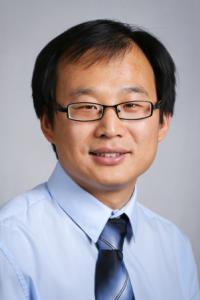Yongheng received his BS at Tianjin University in July, 2006 and his PhD degree at the Institute of Semiconductors, CAS in January 2011. In February 2011 he started to work as a postdoctoral research associate in the Institute for Integrative Sciences, IFW Dresden with an IFW Scholarship and in January 2013 he became the responsible scientist of the MBE Lab in IFW. In April 2015 he joined JKU Linz as a senior researcher where he set up the III/V MBE lab with Prof. Armando Rastelli. In July 2016 he became a specially appointed professor in USTC. He has more than 10 years’ experience in material growth, device fabrication and related physics. He has reported the 1st quantum dot (QD) with light hole in the ground valence band state, the 1st GaAs QD on (001) substrate which can emitted entangled photons without pre-/post-growth tuning and has also grown QDs for wavelength tunable ultrafast electrically pumped single/entangled photon sources etc. Since joined USTC in 2016 he has established a new quantum material & device group with research interests in developing novel quantum materials and devices including ultra-bright single/entangled photon sources, Qubit-oriented superconducting films etc. for the applications in quantum information science.
Related News
Related Publications
- High-efficiency single-photon source above the loss-tolerant threshold for efficient linear optical quantum computing. Nature Photonics (2025). doi:10.1038/s41566-025-01639-8
- Programmable higher-order nonequilibrium topological phases on a superconducting quantum processor. Science 930-934 (2025). doi:10.1126/science.adp6802
- Realization of an untrusted intermediate relay architecture using a quantum dot single-photon source. Nature Physics 21, (2025).
- Experimental Generation of Spin-Photon Entanglement in Silicon Carbide. Physical Review Letters 132, 160801 (2024).
- Establishing a New Benchmark in Quantum Computational Advantage with 105-qubit Zuchongzhi 3.0 Processor. Physical Review Letters 134, 90601 (2024).
- PHYSICAL REVIEW A 109 , 062614 ( 2024 ) Experimental demonstration of a Maxwell s demon quantum battery in a superconducting noisy intermediate-scale quantum processor. Physical Review A 062614, 1-26 (2024).
- Realization of fractional quantum Hall state with interacting photons. Science 584, 2-6 (2024).
- Ultrahigh-reflective optical thin films prepared by reactive magnetron sputtering with RF-induced substrate bias. Review of Scientific Instruments (2024). doi:10.1063/5.0169714
- Generation of genuine entanglement up to 51 superconducting qubits. Nature (2023). doi:10.1038/s41586-023-06195-1
- Eliminating temporal correlation in quantum-dot entangled photon source by quantum interference. Science Bulletin 68, 807-812 (2023).
